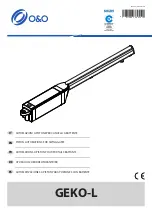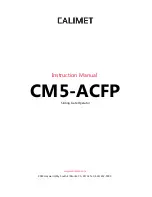
Cleaning Your Garage Door
IMPORTANT:
DO NOT USE A PRESSURE WASHER ON YOUR GARAGE DOOR!
An annual inspection of all the surfaces of your garage door(s) will reveal the extent of weath-
ering and the possible need for refinishing. When the finish becomes eroded or thin, clean
and prime any areas showing deterioration. Then completely refinish the door, according to
the directions, listed below, or the manufacturer’s label directions. Proper finishing of the
wood substrates to protect your door(s) from the effects of moisture and sunlight is vital in
extending the service life and beautifying your garage door(s).
The interior and exterior surfaces, as well as all edges must be properly primed, painted and
maintained, to protect and beautify your door. These finishing instructions are intended to
achieve both objectives for your wood doors(s).
NOTE:
Be sure to clean behind weatherstrips on both sides and top of door.
CAUTION
NEVER MIX CLEANSERS OR DETERGENTS WITH BLEACH.
GLASS CLEANING INSTRUCTIONS
Clean with a mild detergent solution (same as above) and a soft cloth. After cleaning, rinse
thoroughly.
ACRYLIC CLEANING INSTRUCTIONS
Clean acrylic glazing with nonabrasive soap or detergent and plenty of water. Use your bare
hands to feel and dislodge any caked on particles. A soft, grit-free cloth, sponge or chamois
may be used to wipe the surface. Do not use hard or rough cloths that will scratch the acrylic
glazing. Dry glazing with a clean damp chamois.
NOTE:
Do not use any window cleaning fluids, scouring compounds, gritty cloths or solvent-
based cleaners of any kind.
Painting Your Garage Door
Refer to Instruction Insert “
Field Painting Wood Door Sections
”.
Maintaining The Finish On
Your Garage Door
If the finish is beginning to fade, the door may require a field applied top clear coat. Depend-
ing on environment and usage, this may be necessary after 1 to 3 years of use. Refer to
Instruction Insert “
Field Painting Wood Door Sections
”.
Operation And Maintenance
OPERATING YOUR GARAGE DOOR:
Before you begin, read all warning labels affixed to
the door and the installation instructions and owner’s manual. When correctly installed, your
Wayne Dalton door will operate smoothly. Always operate your door with controlled move-
ments. Do not slam your door or throw your door into the open position, this may cause dam-
age to the door or its components. If your door has an electric opener, refer to the owner’s
manual to disconnect the opener before performing manual door operation below.
MANUAL DOOR OPERATION:
For additional information on manual garage door operations
go to
www.dasma.com
and reference TDS 165.
WARNING
DO NOT PLACE FINGERS OR HANDS INTO SECTION JOINTS WHEN
OPENING AND/OR CLOSING A DOOR. ALWAYS USE LIFT HANDLES /
SUITABLE GRIPPING POINTS WHEN OPERATING THE DOOR MANUALLY.
OPENING A DOOR:
Make sure the lock(s) are in the unlocked position. Lift the door by using
the lift handles / suitable gripping points only. Door should open with little resistance.
CLOSING A DOOR:
From inside the garage, pull door downward using lift handles / gripping
point only. If you are unable to reach the lift handles/ suitable gripping points only, use pull
down rope affixed to the side of door. Door should close completely with little resistance.
USING AN ELECTRIC OPERATOR:
IMPORTANT:
PULL DOWN ROPES MUST BE REMOVED AND LOCKS MUST BE REMOVED OR
MADE INOPERATIVE IN THE UNLOCKED POSITION.
When connecting a drawbar (trolley type) garage door operator to this door, a drawbar opera-
tor bracket must be securely attached to the top section of the door, along with any struts
provided with the door. Always use the drawbar operator bracket supplied with the door. To
avoid possible damage to your door, Wayne Dalton recommends reinforcing the top section
with a strut (may or may not be supplied). The installation of the drawbar operator must be
according to manufacturer’s instructions and force settings must be adjusted properly. Refer
to the owner’s manual supplied with your drawbar operator for complete details on installa-
tion, operation, maintenance and testing of the operator.
MAINTAINING YOUR GARAGE DOOR:
Before you begin, read all warning labels affixed to
the door and the installation instructions and owner’s manual. Perform routine maintenance
steps once a month, and have the door professionally inspected once a year. Review your
Installation Instructions and Owner’s Manual for the garage door. These instructions are
available at no charge from Wayne Dalton, a division of Overhead Door Corporation, P.O. Box
67, Mt. Hope, OH., 44660, or at
www.Wayne-Dalton.com
. For additional information on
garage door/operator maintenance go to
www.dasma.com
and reference TDS 151, 167
and 179.
Monthly Inspections:
1. Visual Inspection:
Closely inspect jambs, header and mounting surface. Any material
found not to be structurally sound must be replaced. It may be necessary to uninstall part
or all of the door assembly in order to replace defective material. Refer to the supplemental
instructions “Removing an Existing Door / Preparing the Opening” at
www.Wayne-Dalton.
com
. Inspect the spring(s), counterbalance lift cables, track rollers, pulleys, rear back hangs
and other door hardware for signs of worn or broken parts. Tighten any loose screws and/or
bolts, except on bottom corner brackets or on the counterbalance assembly. Check exterior
surface of the door sections for any minor cracks. Verify door has not shifted right or left in
the opening. If you suspect problems, contact a trained door system technician.
WARNING
GARAGE DOOR SPRINGS, COUNTERBALANCE LIFT CABLES, BRACKETS,
AND OTHER HARDWARE ATTACHED TO THE SPRINGS ARE UNDER
EXTREME TENSION, AND IF HANDLED IMPROPERLY, CAN CAUSE
SEVERE OR FATAL INJURY. ONLY A TRAINED DOOR SYSTEMS
TECHNICIAN SHOULD ADJUST THEM, BY CAREFULLY FOLLOWING THE
MANUFACTURER’S INSTRUCTIONS.
WARNING
NEVER REMOVE, ADJUST, OR LOOSEN THE BOLTS, SCREWS AND/OR LAG
SCREWS ON THE COUNTERBALANCE (END BEARING BRACKETS, DRUMS
OR SPRING SYSTEM) OR BOTTOM CORNER BRACKETS OF THE DOOR.
THESE BRACKETS ARE CONNECTED TO THE SPRING(S) AND ARE UNDER
EXTREME TENSION. TO AVOID POSSIBLE SEVERE OR FATAL INJURY,
HAVE ANY SUCH WORK PERFORMED BY A TRAINED DOOR SYSTEMS
TECHNICIAN USING PROPER TOOLS AND INSTRUCTIONS.
TORQUEMASTER
®
PLUS SPRINGS:
Pawl knob(s) (located on the TorqueMaster
®
end brack-
ets above the door) should be engaged to prevent the door from rapidly descending in case
of spring failure or forceful manual operation.
EXTENSION SPRINGS:
A restraining cable or other device should be installed on the exten-
sion spring (located above the horizontal tracks) to help contain the spring if it breaks.
2. Door Balance:
Periodically test the balance of your door. If you have a garage door
drawbar operator, use the release mechanism so you can operate the door by hand when
doing this test. Start with the door in the fully closed position. Using handles or suitable grip-
ping points, lift the door to check its balance. Adjust TorqueMaster® or Extension spring(s),
if door lifts by itself (hard to pull down) or if door is difficult to lift (easy to pull down). DO NOT
attempt to repair or adjust Torsion Springs yourself. To adjust TorqueMaster® or Extension
spring(s), refer to your installation instructions and owner’s manual. If in question about
any of the procedures, do not perform the work. Instead, have it adjusted by a trained door
systems technician.
3. Lubrication:
The door should open and close smoothly. Ensure the door track rollers are
rotating freely when opening and closing the door. If track rollers do not rotate freely, clean
the door tracks, removing dirt and any foreign substances. Clean and lubricate (use a non-
silicon based lubricant) graduated end hinges, center hinges, steel track rollers, bearings and
torsion springs (torsion spring coil surfaces). DO NOT lubricate plastic idler bearings, nylon
track rollers, door track. DO NOT oil a cylinder lock, if actuation is difficult use a graphite dust
to lubricate.
CHECK FOR PRESENCE OF SAFETY LABELS:
20
Maintenance
Содержание Flush 42
Страница 23: ......





































